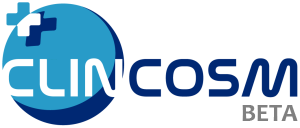SCLERO-PRL: Prevalence of Hyperprolactinemia in Systemic Scleroderma
Study Details
Study Description
Brief Summary
Systemic sclerosis is an autoimmune and inflammatory disease characterized primarily by fibrosis and vascular involvement. We know that the immune system is disrupted in systemic sclerosis, but there are probably other mechanisms to explain the disease, including deregulation of certain proteins such as prolactin
| Condition or Disease | Intervention/Treatment | Phase |
|---|---|---|
|
Study Design
Arms and Interventions
| Arm | Intervention/Treatment |
|---|---|
| Patients with systemic sclerosis The study will be systematically offered to any scleroderma patient seen in scheduled hospitalization |
Biological: blood test
to analysis prolactin in healthy subjects and scleroderma patients
then to analysis in only scleroderma patients: thyroid-stimulating hormone (TSH), thyroxine (T4), luteinizing hormone (LH), oestradiol, follicle-stimulating hormone (FSH), BAFF (B-cell activating factor), IL-6 (interleukin 6) and endoglin
|
| Healthy subjects Healthy subjects who will donate blood to the French Blood Establishment (EFS) and matched to scleroderma patients on age (+/- 5 years) and sex |
Biological: blood test
to analysis prolactin in healthy subjects and scleroderma patients
then to analysis in only scleroderma patients: thyroid-stimulating hormone (TSH), thyroxine (T4), luteinizing hormone (LH), oestradiol, follicle-stimulating hormone (FSH), BAFF (B-cell activating factor), IL-6 (interleukin 6) and endoglin
|
Outcome Measures
Primary Outcome Measures
- the prevalence of hyperprolactinemia in scleroderma patients [At 2 years]
Rate of prolactin measured by immuno-chemiluminescence (Abbott Architect automaton). The presence of a defined hyperprolactinemia at the University Hospital of Lille: for women, prolactin level higher than 26.5 ng/mL and for men, higher than 19.4 ng/mL.
Secondary Outcome Measures
- the prevalence of hyperprolactinemia between scleroderma patients and healthy subjects matched by age and sex [At 2 years]
- the associations between prolactin levels and clinical (scleroderma phenotype, visceral involvement) and biological (inflammation, antibodies, cytokines) manifestations in systemic sclerosis [At 2 years]
- association between prolactin levels and biological markers of the immune system in scleroderma patients [At 2 years]
Eligibility Criteria
Criteria
Inclusion Criteria:
Scleroderma patients:
-
man or woman over 18 years old
-
with systemic sclerosis meeting ACR-EULAR 2013 criteria
-
having given his no opposition
-
being social insured
Healthy subjects:
-
man or woman over 18 years old
-
donation of blood to the EFS
-
matched on age (+/- 5 years) and sex
-
having given his no opposition
Exclusion Criteria:
-
Man or woman under 18 years old
-
Pregnant or breastfeeding women
-
Receiving medical treatment inducing dysfunction of the hypothalamic pituitary axis
-
Refusing or unable to give no objection
Contacts and Locations
Locations
| Site | City | State | Country | Postal Code | |
|---|---|---|---|---|---|
| 1 | Hop Claude Huriez Chu Lille | Lille | France | 59037 |
Sponsors and Collaborators
- University Hospital, Lille
- Association pour la Formation et la Recherche en Médecine Interne (AFORMI)
Investigators
- Principal Investigator: David Launay, MD,PhD, University Hospital, Lille
Study Documents (Full-Text)
None provided.More Information
Publications
None provided.- 2020_18
- 2020-A03066-33
